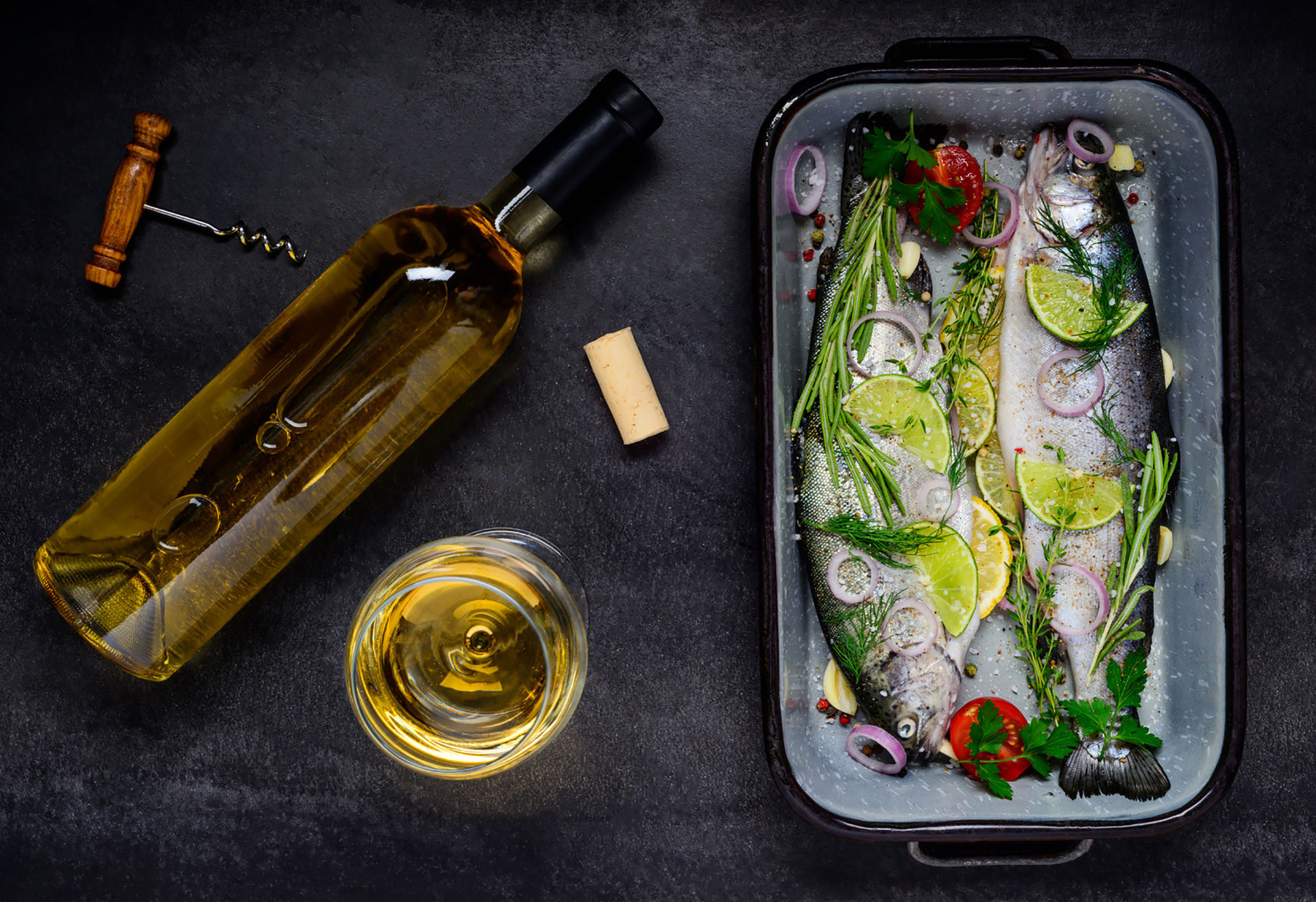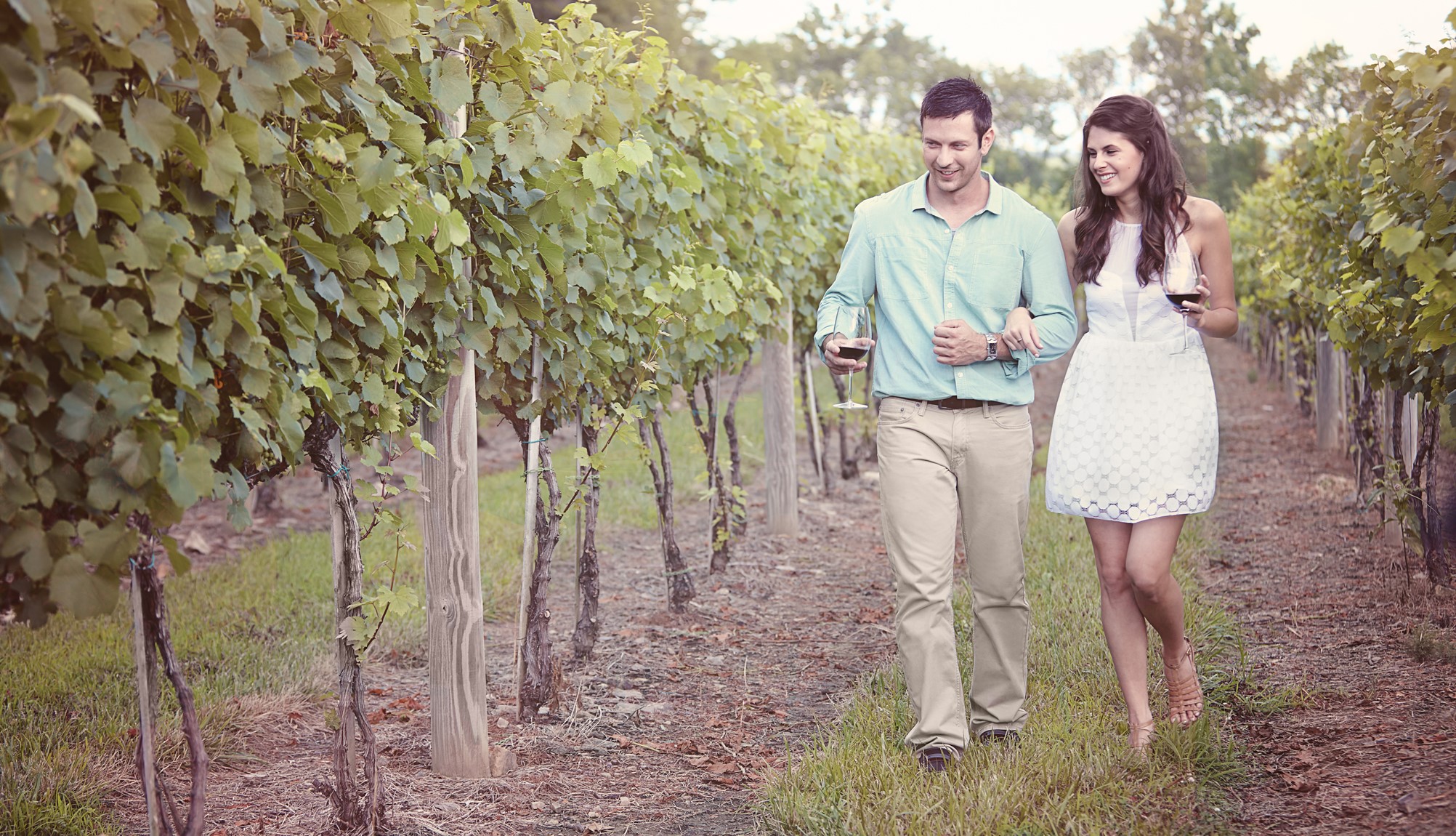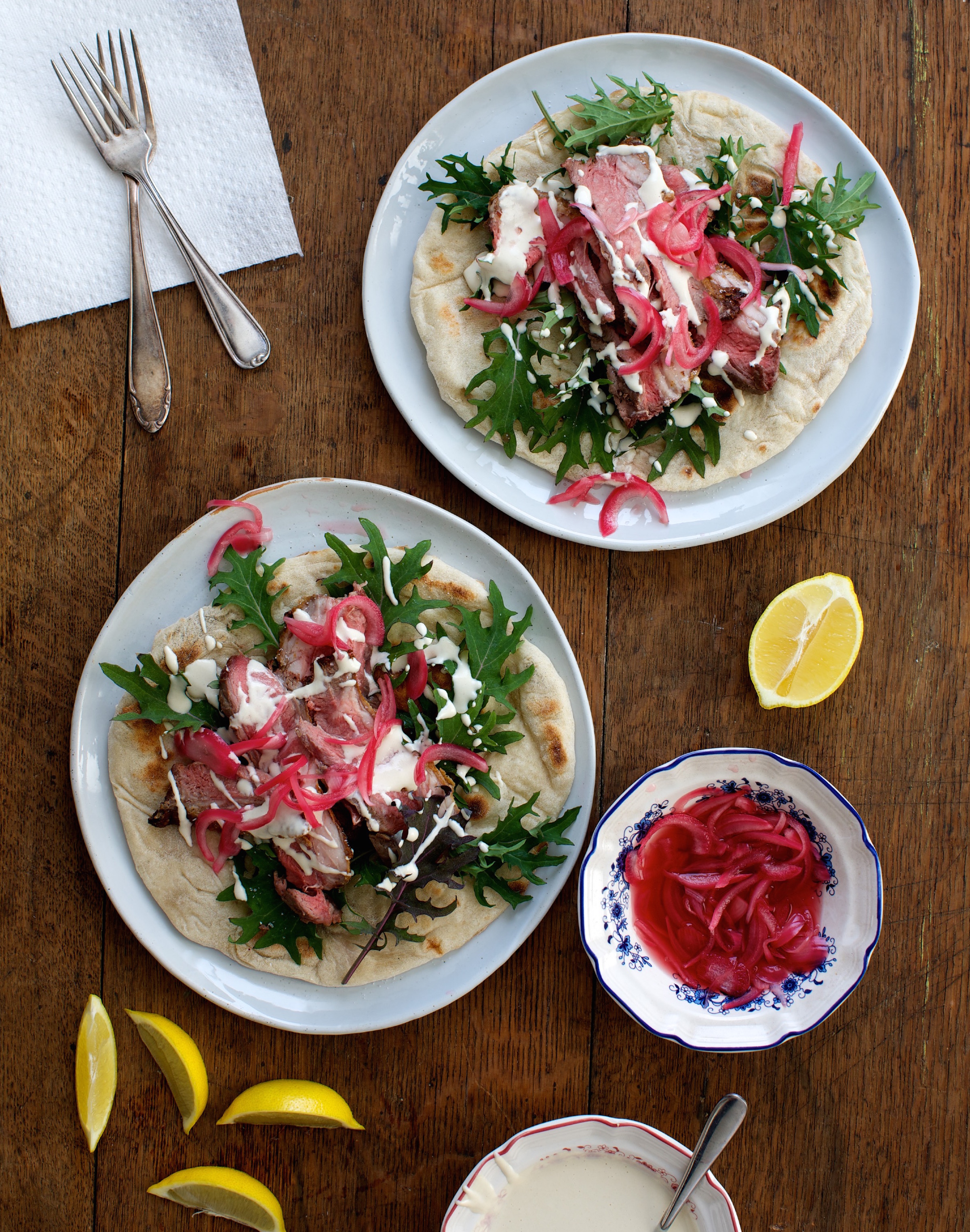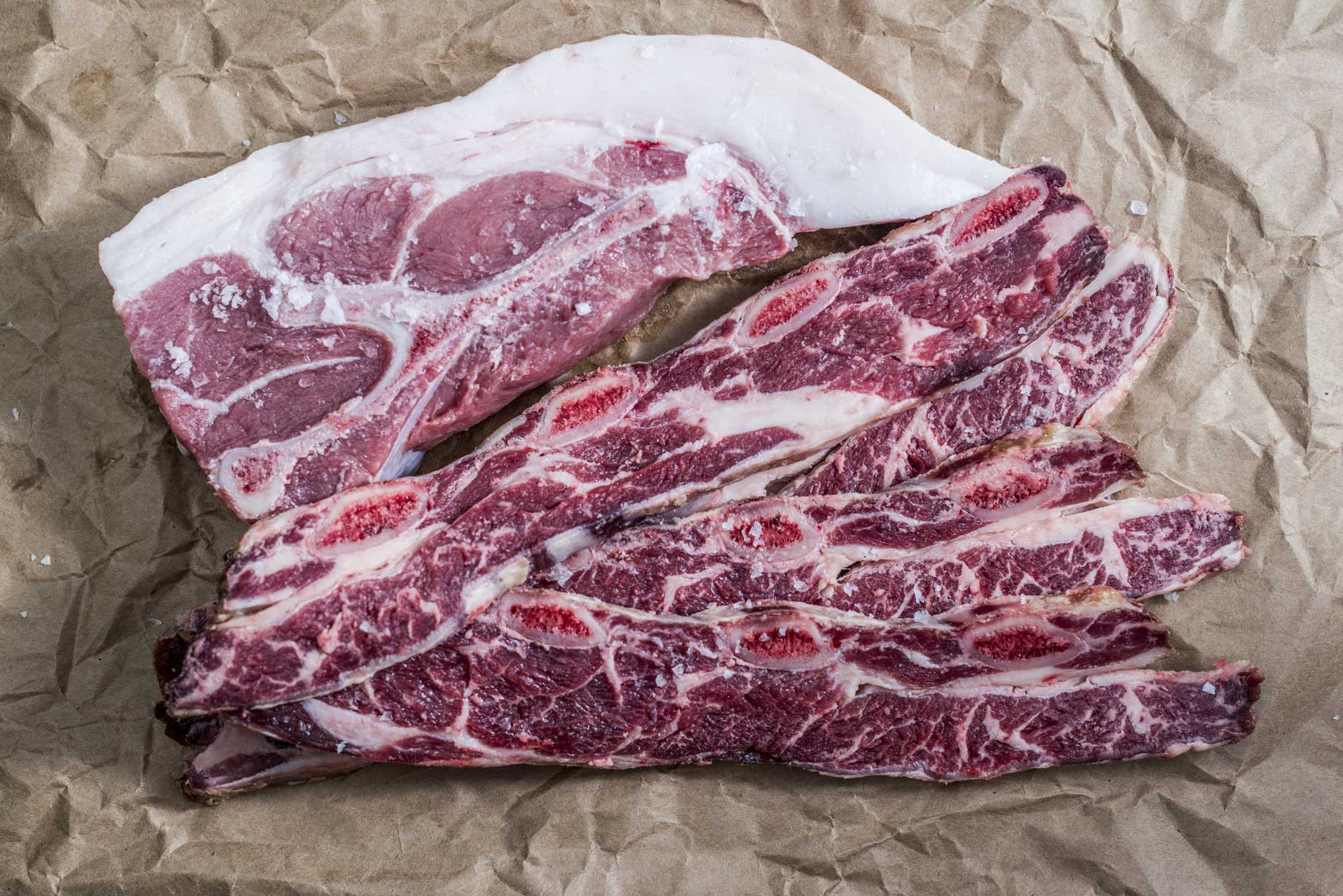
The (Almost) Closed Loop
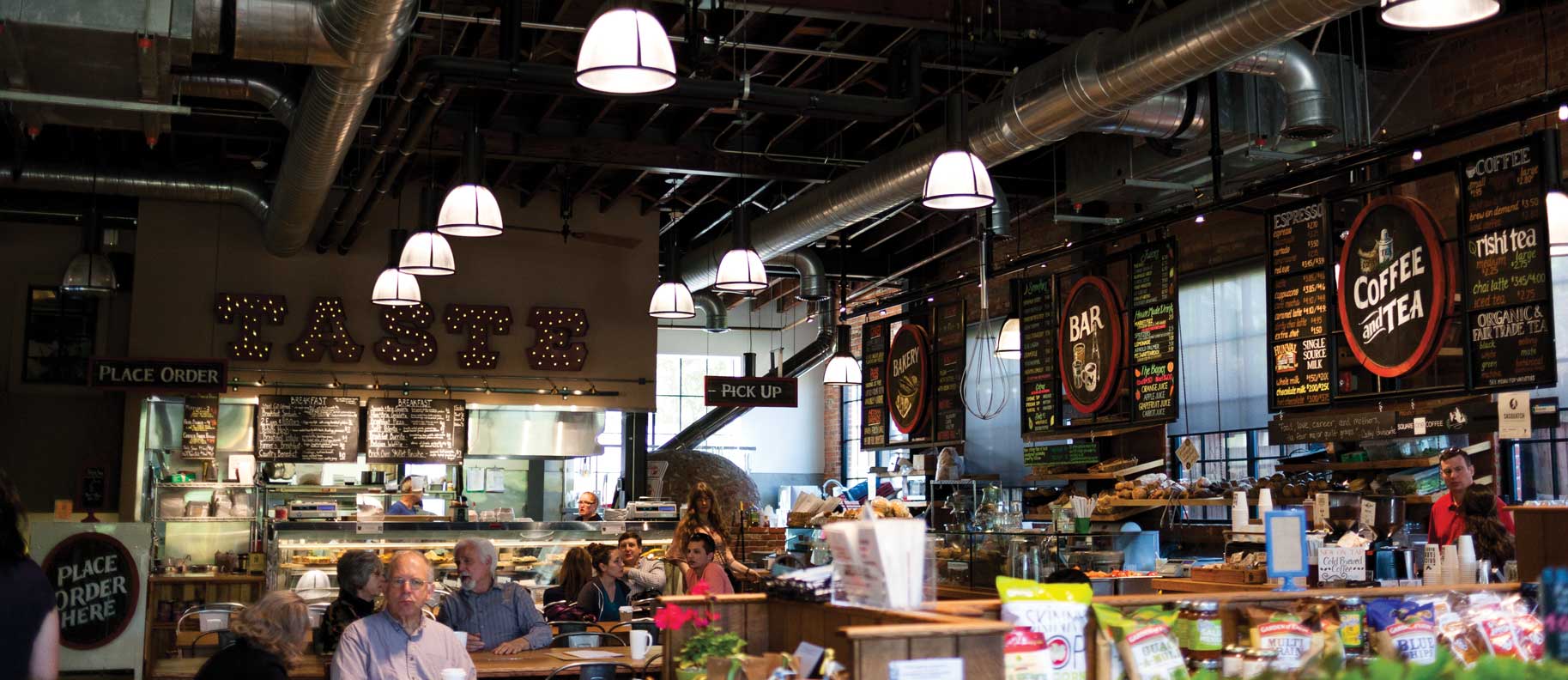
GRASSROOTS
First there was a small farm, which became a bigger farm. And then came a market. And now, a restaurant. It’s taken 10 long years, but Double Brook Farm and Brick Farm Market and Tavern finally appear poised to change the way we eat. For real this time.
By Scott Edwards · Photography by Josh DeHonney

Brick Farm Tavern chef Greg Vassos, right, with Robin and Jon McConaughy—and some of Double Brook’s newest residents. Top: The fashionable Brick Farm Market.

When fine dining meets farm-fresh at Vassos’ inspired hands.
This all started with a modest enough ambition. Robin and Jon McConaughy wanted to close the gap some between their young family and its food sources. The Omnivore’s Dilemma was just about to be published, and they’d read an excerpt in The New York Times Magazine, which drew the same disgusted reaction from both of them. Soon after, they started looking for a little more property on which they could spread out.
“The original idea,” Robin says, “was to find a piece of land where we could have a couple of animals and show our kids where their food is coming from, and they could have some chickens that they would presumably feed. Which has never happened. Ever.”
Beyond a backyard garden, neither Robin nor Jon had any experience with farming—Jon worked in finance on Wall Street and Robin owned a sports media company—but what they were imagining was less a farm than it was an elaborate hobby. They landed on 60 acres in Hopewell Township, New Jersey, and built their home—a turn-of-the-century farmhouse on the outside, a model of modern energy efficiency on the inside. Then they were connected with an Angus calf that had been rejected by its mother. They named her Elsie and nurtured her to a robust 1,400 pounds. When the time came to slaughter Elsie, everyone they asked wanted a share. More cows followed. Robin and Jon started staging farm stand-style sales in their barn. The hobby was hurtling toward something much bigger.
“It just mushroomed out of control,” Robin says.
“But I think that somewhere along the way, we looked at, if we truly are going to be farmers, what makes the most sense,” Jon says. “So, it was in those early years that we decided, well, if we’re going to do all this, we probably should connect all the pieces, and we should have the restaurant and the market and the farm.”
Jon refers to it now, 10 years later, as a “vertical model” or a “closed-loop, sustainable food system.” In theory, it’s pretty basic. There’s a market and a restaurant. Both are stocked almost entirely by the farm, from the microgreens to the merguez. That cuts way down on the marketing and distribution concerns that plague the modern farmer. In practice, however, it’s rife with challenges—challenges that plague the other farmers, too. In other words, it’s an improvement, but it’s far from ideal. More on that in a bit, though.
Once Robin and Jon began acquiring more land, they turned their sights toward the market and the restaurant. They bought both properties, which sit about a mile apart from each other, around the same time, six years ago.
“The plan was—and for various reasons, it’s good that it didn’t work out this way—,” Jon says.
“—our sanity,” Robin interjects and laughs.
“—the market and the restaurant would open together.”
Brick Farm Market opened three years ago in a fashionably retrofitted 1930s Chevy dealership located in the heart of Hopewell Borough. The restaurant, Brick Farm Tavern, opened in a meticulously renovated 1822 farmhouse just outside of the borough in November. Sustaining both at the same a few years ago, when there was still so much to figure out with the farm, likely would have sunk them. They see that now. Opening the market alone enabled them to get a better foothold, which included establishing an audience for the restaurant. Two weeks before it opened, Friday and Saturday nights were booked solid a month out, and that remains the case.
During those three years between openings, another critical piece fell into place. After months of detours, the McConaughys constructed the second USDA-inspected, on-farm slaughtering facility in the entire country. It’s significantly streamlined their operation. It’s also satisfied a concern that has roots in the farm’s impetus. They could humanely raise their animals, but, with so few options available to them, they could not ensure that they’d be slaughtered that way.
The Double Brook Farm slaughterhouse is designed according to the recommendations of Temple Grandin, the famed animal science scholar, every aspect of which is aimed at calming the animal right up to the end.
“To us, it is the most important thing about our farming operation, being able to humanely take these animals to the final destination, basically,” Robin says. “Even if you’re squeamish, which I am—I made myself watch the slaughter one day—I just couldn’t have been prouder of our guys and the way they do it. It’s totally quiet. It’s totally calm.”

The microgreens are grown hydroponically, then transplanted to a greenhouse behind the restaurant so they can be picked fresh.
What sustaining looks like
Double Brook Farm, today, encompasses roughly 850 acres, 500 of which the McConaughys own (they lease the rest), spread across several parcels, all but one of them in Mercer County. Their staff measures about a hundred strong, the great majority of it divided between the market and the restaurant. The mission statement, though, remains relatively unfazed by the staggering growth: Provide tasty, nutritious food in the most sustainable and humane ways available.
With each year, they inch a little closer to that ideal of a completely closed-loop operation. It’s an admirable aspiration, but it’s not that realistic.
“People want salt, as it turns out,” Robin says. “And vanilla. And pepper.
To remain true to their cause, they’ve learned to prioritize their decisions once they move beyond their immediate reach. Sourcing locally is second-best. If they need to look further, they’ll evaluate based upon the practices. The flowchart establishes an order, but the decisions it produces rarely come so easily.
A more glaring opening in their loop than the salt is the beef. Raising cattle, they realized a couple years back, was not sustainable, not for them. They had over 300 head of cattle then divided among seven herds that were rotated daily. The farmers who tended to them were logging about 150 miles a day because the herds grazed between three to 10 miles apart from each other, and the farmers were visiting each one at least twice a day.
“You’re basically doing it all day,” Robin says. “And then, whenever a farmer would get hurt or something would happen, it would be because we were moving cattle in a trailer from this 30-acre lot to that 150-acre lot. It just consumed us.”
So even though they got their start with Elsie, the McConaughys were learning, gradually, not to marry themselves to any preconceived perceptions. They moved all of their calves and cows down to Lakota Ranch, in Virginia, which adheres to the same all-natural and humane treatment. The only difference is that its several hundred acres are continuous. The beef that’s sold at the butcher counter at Brick Farm Market and featured on the tavern’s menu comes from Thistle Creek Farms, in Central Pennsylvania, which has been cultivating pasture-raised steers, including those from Lakota, for more than 25 years.
“Now we drive about 150 miles a week, instead of seven days a week, to meet halfway at the slaughterhouse,” Robin says. “That is the one piece that we don’t slaughter ourselves, is the cows. That does give us pause, but it is really the best-possible and way more-sustainable solution for us.”
A decade in, there is one amendment to the mission statement: and do so in an economically viable manner.
“We made the realization probably two or three years ago that that needed to be part of the equation,” Jon says. “As we listed our pillars of sustainability, economic sustainability wasn’t initially on there. Everything was a fun experiment, but not necessarily thought out in the way of, OK, how is it eventually going to make money? A model isn’t a model if it can’t be an economic model as well.”
For the better part of the last hour, we’ve been sitting around a table set for four in the dining room furthest from the tavern’s kitchen. The walls are adorned with paintings by the Pennsylvania Impressionist John Fulton Folinsbee, who is Robin’s great-grandfather. The next room over is decorated with a series of prints that she brags she picked up for 50 bucks at the Golden Nugget.
Later, as Jon and I pull up to the slaughterhouse, we’re discussing how realistic the concept of a profitable, sustainable-minded farm is. Before the tavern opened, they were supplying a number of New York restaurants.
“If we weren’t within an hour’s drive of 20 million people [between New York and Philadelphia], would it work? I’m skeptical that it would,” he says. “I think proximity makes a big difference.”
As do resources, of course. Jon and Robin, thanks in large part to their lucrative, former careers, were uniquely positioned to venture down this path and weather the onslaught of obstacles they’ve encountered along the way. Still, it’s been 10 hard years just developing the infrastructure so that they could arrive here, the farm, the market and the tavern driving each other. Without one, none of it really works. But it’s still too early to tell if it works all that well with all three.
Robin, Jon and I leave the restaurant and head for the market, Robin climbing into her Tesla, Jon and I into his Audi SUV. Just along the horizon, Jon motions toward a large barn that contains towering walls of hydroponic heads of lettuce and tables loaded with bok choy. In the surrounding 25-acre field is where the vegetables are grown. On the other side of the restaurant, there’s a fenced-in plot that’s been handed over to Tama Matsuoka Wong, the co-author of Foraged Flavor. “She’s cultivating some weeds,” as Jon puts it, that’ll be used at the tavern. With so much so close, what could go wrong?
Logistics first, cooking later
Our notions of farm-to-table eating, and even farming itself, are deeply romanticized. Once we started catching on to how bad the conventional set-up was (and still very much is)—the sugar-laden processed foods, the factory farming—it was a natural reaction to get as far away from all of that as we could, to get back to the land, to start eating pure again (or, really, for the first time). But we’re not that much better informed now about how our food is created or where it comes from. For someone so recently burned, we were quick to throw our trust behind a bunch of marketing terms—organic! grass-fed! free-range!—and picturesque magazine spreads. (Thank you.)
The reality: “Farming is relentless,” Robin says.
“Even for these two outlets, the market and the restaurant, we go through a lot of animals. And vegetables,” Jon says. “Yeah, it’s rotational grazing, but there’s 2,000 chickens that have to supply the 300 a week we need to keep this operation going.”
More numbers: two Berkshire pigs, two whole lambs and 35 chickens. That’s what the tavern went through in a week in May, according to its executive chef and partner, Greg Vassos, who describes the synchronicity that’s needed to pull off farm-to-table dining night in and night out as “very chaotic.”
On any given day, the tavern’s susceptible to a freak storm, a broken-down truck, an ill farmer. And then consider this: Brick Farm Tavern is the only restaurant in the country with its own slaughterhouse.
“It’s a juggling act because we’re getting whole pigs, whole lambs, whole chickens,” Greg says. “There are a lot of different parts to the animal, so it’s a lot to figure out.”
And that constant planning, between Greg and his chefs, between Greg and the farmers, between Greg and Double Brook’s butcher, encompasses that night, the upcoming weekend, the following week, the following month even. Killing an animal will never be taken lightly when all involved feel a personal and professional responsibility to see that every viable part is utilized.
“The farm-to-table movement, I think the hardest part is having the chef fully understand what that means, using the full animal,” Jon says.
The slaughterhouse is located at the end of a long, potholed, dirt driveway behind a sprawling field where chickens strut in all directions, near and far, under the close watch of a big, white sheepdog that sits atop a prominent outcropping toward the front of the field. Near the entrance, there’s a muddy pigpen. Most of the lambs, once they’re weaned, are raised nearby too. The idea is to foster a sense of familiarity right up until the end.
From the outside, the building looks like any other generic farm structure. Just as we’re about to go in, Jon acknowledges a bucket at the foot of the door that I overlooked. Inside, there are two lambs’ heads. “The USDA comes and collects the heads,” he says. That would be the most dramatic thing I’d see. Inside, it’s empty. And spare.
Before this was built, they were spending about $100,000 a year to slaughter their animals. That’s down to about $20,000. The building’s solar-powered, so almost all of that cost is labor. What that means, basically, is that they can match and usually even improve upon the price of conventionally farmed chicken, turkey, lamb and pork.
If Greg’s name sounds familiar, it’s because he owned a short-lived restaurant in Pottstown called Racine, which was a critical darling. Racine was farm-to-table—Greg himself sourced the ingredients from the neighboring farms. But, he says, there’s a big difference between that and this. His learning curve, even with that experience, was steep. “Very, very steep” is actually what he said. On one hand, you’re cherry-picking all the best veg and parts of the pig and cow. And with the other, you’re being told there won’t be enough tomatoes to go around an hour or two before dinner service, and you’re figuring out what to do with short ribs. And ground beef. So much ground beef.
“I feel my duty as a chef is using what’s available, and making something special out of it, rather than me telling them, ‘I need this. I need that,’ ” Greg says. “This job, I think, is the ultimate dream. If you’re going to do farm-to-table, this is the way to do it.”
Shifting the paradigm
After we leave the market, sitting at a stoplight, I ask Jon what he’d be doing if he wasn’t driving me around.
“The average day is still sort of connecting the pieces, probably more from an infrastructure side,” he says. “I’ve been the general contractor for the entire project, and it’s been a lot of construction over the last four or five years. But the real reason I got into this is farming. So my days are slowly starting to shift from manager conversations and construction to being out on the farm.”
In piecing together his own operation, he’s visited countless other farms. In the beginning, it was just the likeminded ones, but then he grew curious and needed to see how the other half, the conventional farms, lived.
“I wanted to see why they’re doing it. And, just how bad is the situation,” Jon says. “I think it’s easy to blame people and point fingers. But I think you really have to see it first before you make those assumptions.”
We drive past one of their fields where ewes are paired up with their lambs, all of them nestled in the grass around a pair of giant, brown donkeys. Are those donkeys? I ask. “Yeah,” he says. “They protect them.” Really? “I think, actually, the donkeys are just protecting themselves.”
I know you said that you were moved to undertake all of this, or maybe a smaller version of it, but to make even that kind of commitment, it seems as though the seed was planted long before. Was there a part of you always kind of pining for this lifestyle?
“I think if you were to ask Robin, she would say no. I’ve always sort of had the desire to get into farming,” Jon says. “When I got into finance, I always sort of perceived it to be a means to an end.
“Now, a different question would be, after being in farming for 10 years, is it what I anticipated? Not yet, so far. We asked ourselves, especially a year or two ago, could we have done anything differently? I don’t think we could have. If you don’t connect [the farm, market and restaurant], it’s not profitable enough. And there’s no easy way to connect them without trying to get them up and running at the same time.”
For all their effort, their kids, now 13 and 16, only seem interested in the farm when they’re friends are over. But even though Robin and Jon may have started out wanting this for them, it’s their eventual grandkids they’re doing the heavy lifting for now. Jon was right when he said that a conscientious farm alone was never going to shift the paradigm. But a self-sustaining market and restaurant could show us the way.







